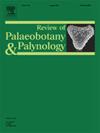Adding ‘flavour’ to past cuisines: First steps towards a phytolith reference collection of modern Mediterranean herbs
IF 1.7
3区 地球科学
Q2 PALEONTOLOGY
引用次数: 0
Abstract
Most aromatic herbs belong to plants within the onion subfamily (Allioideae Herb.), the mint family (Lamiaceae Martinov), the parsley family (Apiaceae Lindl.) and the tarragon family (Asteraceae Bercht. & J.Presl), many of which are native to the Mediterranean. The culinary use of herbs has been textually documented in the eastern Mediterranean for over 3000 years. However, due to the nature of the archaeological record, where most macroscopic plant assemblages are preserved through charring, and the physiological characteristics of the plants themselves, herbs are largely underrepresented and have seldom been considered when assessing prehistoric culinary practices. Here, we present the results of a pilot modern phytolith reference collection of Mediterranean herbs to assess the potential of phytoliths in revealing ‘invisible’ plant ingredients in archaeological narratives. Phytoliths were observed in 48 of the 62 analysed reference samples. Although herbs are relatively poor phytolith producers, certain taxa produce distinctive morphotypes at different taxonomic levels that can potentially be used to identify the culinary uses of Mediterranean herbs in the archaeological record related to food preparation (e.g., residue analyses from food-processing artefacts, cooking vessels, charred food remains, etc.). In particular, anatomically connected silicified cells (silica skeletons) with potential taxonomic value were observed in species of the genus Mentha L. Moreover, species from the Apiaceae family, such as Daucus carota subsp. carota L. and Foeniculum vulgare Mill., produced massive multiseriate and pin-cushion trichomes with large multicellular stalks that could potentially hold taxonomic value.
为过去的菜肴增添“风味”:迈向现代地中海草本植物岩参考收藏的第一步
大多数芳香草本植物属于洋葱亚科(Allioideae Herb.),薄荷科(Lamiaceae Martinov .),欧芹科(Apiaceae Lindl.)和龙蒿科(Asteraceae Bercht.)。,J.Presl),其中许多原产于地中海。在地中海东部,草药的烹饪用途已有3000多年的文字记载。然而,由于考古记录的性质,大多数宏观植物组合通过炭化保存下来,以及植物本身的生理特征,草药在很大程度上被低估,在评估史前烹饪实践时很少被考虑。在这里,我们提出了一个试点现代植物岩参考收集地中海草药的结果,以评估植物岩在揭示考古叙述中“隐形”植物成分方面的潜力。62个分析的参考样品中有48个观察到植物岩。虽然草药是相对较差的植石生产者,但某些分类群在不同的分类水平上产生独特的形态,可以潜在地用于识别与食物制备相关的考古记录中地中海草药的烹饪用途(例如,食品加工人工制品,烹饪容器,烧焦的食物残留物等的残留物分析)。特别是在薄荷属植物中发现了具有潜在分类价值的解剖连接的硅化细胞(二氧化硅骨架)。小花梗和普通的磨坊。在美国,产生了巨大的多系列和针垫毛状体,具有大的多细胞茎,可能具有分类价值。
本文章由计算机程序翻译,如有差异,请以英文原文为准。
求助全文
约1分钟内获得全文
求助全文
来源期刊
CiteScore
3.50
自引率
21.10%
发文量
149
审稿时长
6 months
期刊介绍:
The Review of Palaeobotany and Palynology is an international journal for articles in all fields of palaeobotany and palynology dealing with all groups, ranging from marine palynomorphs to higher land plants. Original contributions and comprehensive review papers should appeal to an international audience. Typical topics include but are not restricted to systematics, evolution, palaeobiology, palaeoecology, biostratigraphy, biochronology, palaeoclimatology, paleogeography, taphonomy, palaeoenvironmental reconstructions, vegetation history, and practical applications of palaeobotany and palynology, e.g. in coal and petroleum geology and archaeology. The journal especially encourages the publication of articles in which palaeobotany and palynology are applied for solving fundamental geological and biological problems as well as innovative and interdisciplinary approaches.

 求助内容:
求助内容: 应助结果提醒方式:
应助结果提醒方式:


